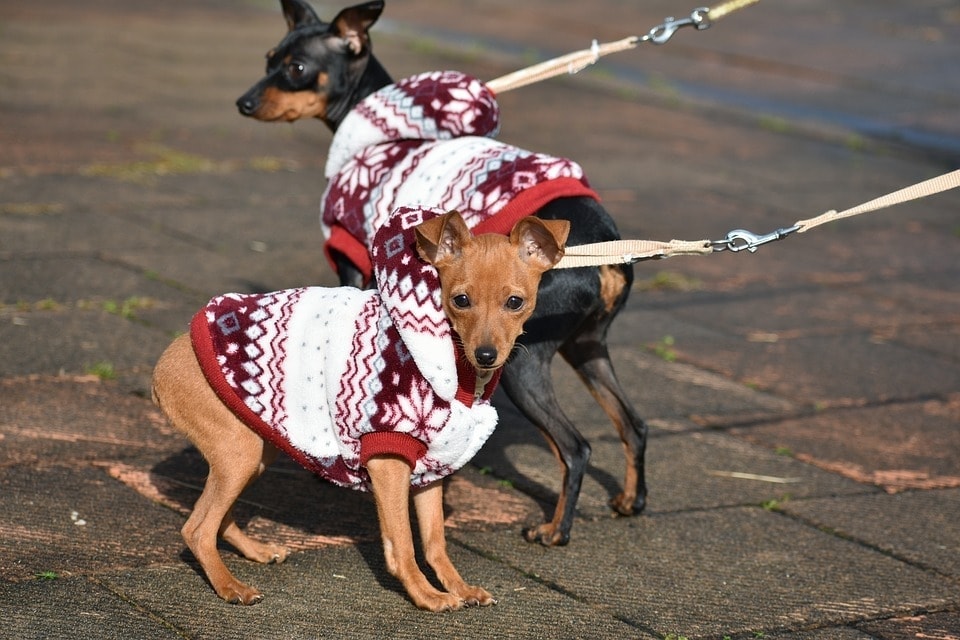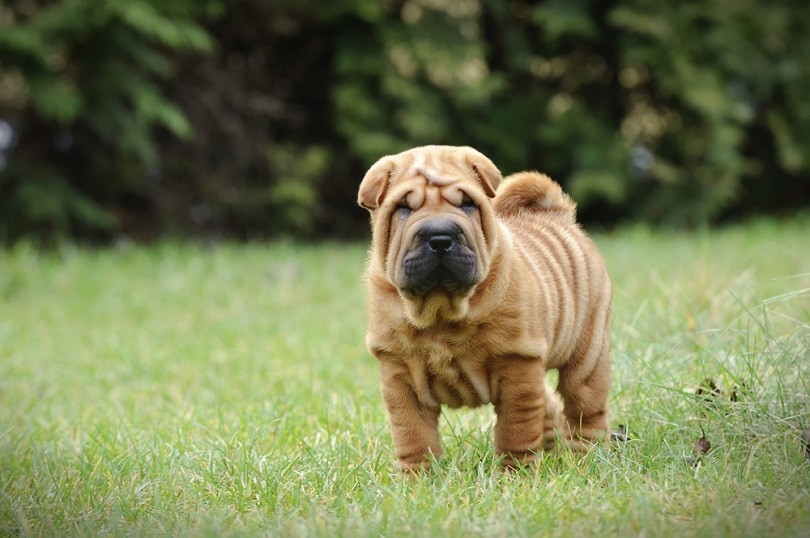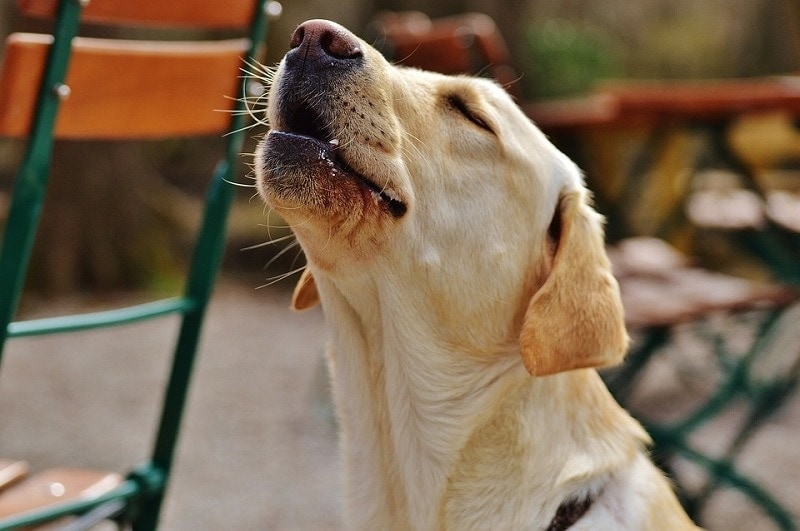Dog Attacked by Porcupine? Our Vet Explains What to Do
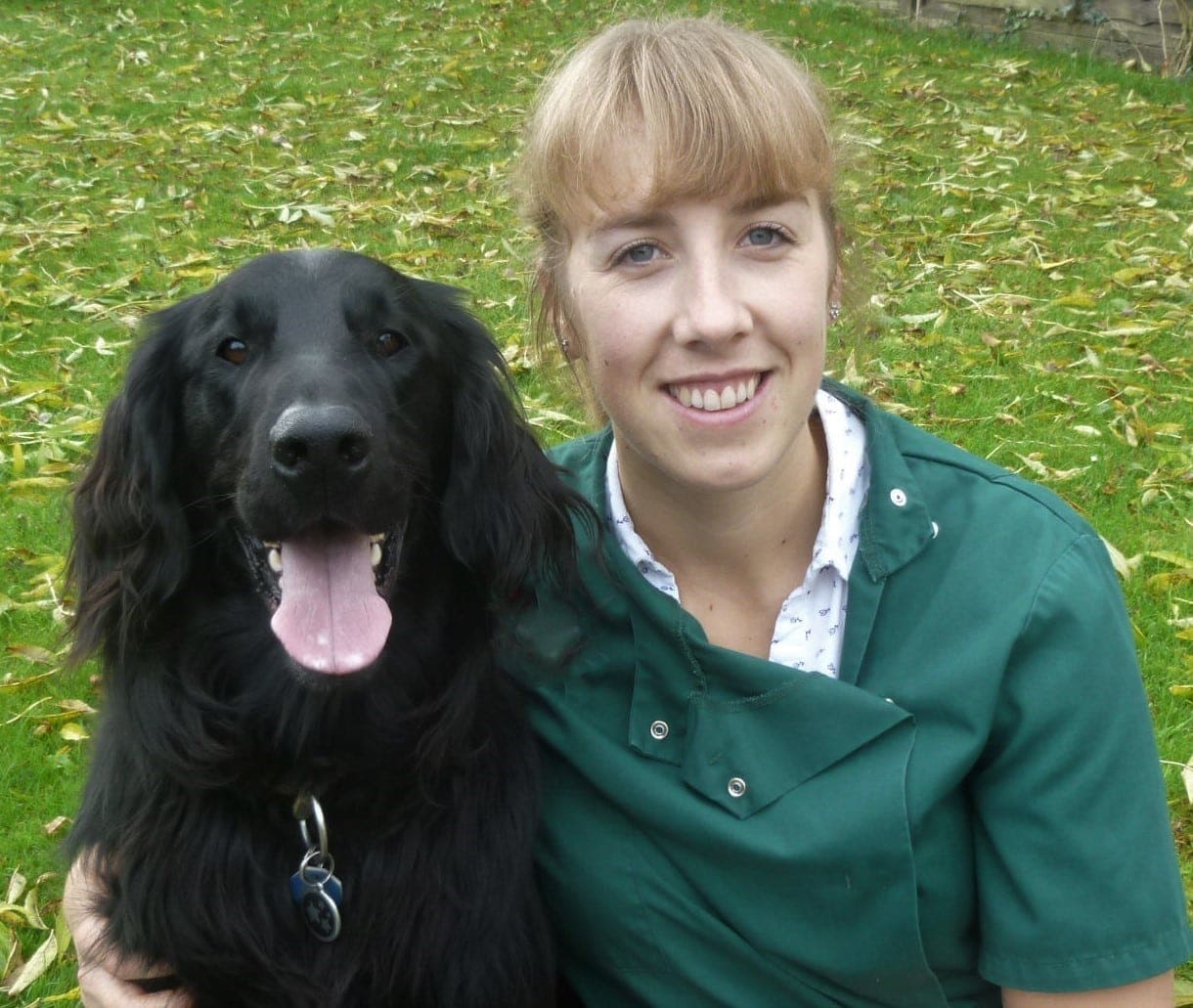
By Dr. Rebecca MacMillan, BVetMed MRCVS (Vet)
Updated on

The warmer months of the year see an increase in porcupine activity. This medium-sized mammal has a body covered in spikey quills and tends to emerge at nighttime to forage for food, roam around, and mate. Unfortunately, due to their inquisitive nature, dogs are often at the receiving end of porcupine spines. But what do you do if your dog is attacked by a porcupine? Is it painful and dangerous for them? This article explores that in more detail.
If your dog is attacked by a porcupine, do not try to remove the quills yourself. Call your veterinarian immediately and follow their expert advice. In the meantime, don’t give your dog any food or water. Attach a cone if possible to keep your dog from embedding the quills any further. Keep reading to learn everything you need to know!
What Happens if a Porcupine Attacks a Dog?
Porcupines will try to defend themselves from any would-be attackers by shedding their spines (also known as quills). They will usually try to give a warning first by chattering their teeth and shaking and rattling their quills. This noise often puts off any further advances. If this is ignored, they may then charge backward and hit their tail against any attackers, releasing the quills into the dog’s skin. Contrary to popular belief, porcupines don’t shoot their spines out; they have to make contact.
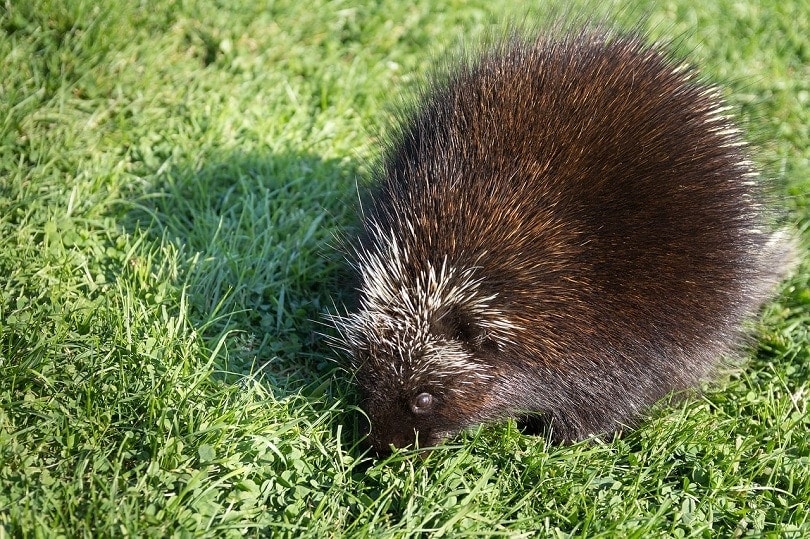
The quills have hooks or barbs on the end, which catch in the skin, making removal tricky and painful. Most of the quills will end up in the dog’s muzzle and face. The quills themselves are not poisonous, but they can be fairly traumatic, creating multiple wounds in the skin–especially if they aren’t removed with controlled care. Occasionally, nasty eye and mouth injuries can occur, too.
Unfortunately, porcupines can’t tell the difference between an attacking dog or an inquisitive friendly one, so the result is likely to be the same— a face full of spikey quills!
- Keep calm. By staying calm you will help keep your dog calm too. Try and stop him from scratching at the quills, as he will risk breaking them or embedding them further into his skin.
- DO NOT REMOVE THE QUILLS YOURSELF. Don’t try to remove the quills yourself. This will cause your dog further pain, and you may risk breaking the tips off, which will make them harder to find and remove successfully.
- Put a cone on your dog if you have one. The ASPCA advises putting a cone (Elizabethan collar) on your dog, if you have one, to prevent them from rubbing at the quills
- Don’t give your dog any food or drink. If your dog requires an anesthetic to remove the quills, it will be safer if they haven’t recently eaten.
- Call your veterinarian. Give your veterinary hospital a call to let them know what has happened. They will usually ask you to bring your pet in for an examination and treatment.
- Follow your veterinarian’s advice. They will tell you what the best course of treatment is for your dog, so follow their recommendations. If you are worried about finances, it’s best to discuss this with your vet at the earliest opportunity.
Why You Should Not Remove Porcupine Quills Yourself
You shouldn’t try to remove porcupine needles from a dog yourself. You must take your dog to a veterinarian if they have been quilled by a porcupine, even if it is outside of normal clinic opening hours.
- Porcupine quills contain barbs that embed themselves into the dog’s skin. These are very painful to pull out. Even if your dog tolerates you pulling out the first few, they are quickly going to get fed up and not let you do the rest!
- You risk getting yourself hurt. Your dog is going to very painful and stressed, he may lash out and bite you. It is nearly impossible to put a muzzle on a dog with a face full of porcupine quills, so the safest way of treating them is with some form of sedation or anesthetic at a veterinary clinic.
- It is hard to tell if you have removed all the quills. Some quills may have ended up embedded inside your dog’s mouth, in their tongue, or even in their throat, and you won’t be able to find all of them yourself at home.
- Leaving the tips of the quills behind because you have broken them during an attempt at removal can lead to skin infections and abscess formation. It’ll be a lot harder for your vet to find the ends once the main part of the quill has snapped off.
- You may be tempted to try and leave them in place hoping that they will fall out by themselves. They are more likely to work their way further into the skin and you risk your dog traumatizing himself trying to scratch at them.
Don’t waste time or risk causing your dog any unnecessary stress by trying to remove the quills at home. One retrospective study showed that there was a higher risk of complications when dogs weren’t taken to their veterinarian quickly.
What Will My Vet Do if My Dog Is Attacked by a Porcupine?
Your veterinarian will usually advise anesthetic or heavy sedation to extract the porcupine needles, particularly if they are removing quills from a dog’s face. This will help keep both the veterinarian and your dog safe whilst they carefully examine and remove the quills. They will also be able to do a more thorough search in this way, exploring inside the dog’s mouth for any hidden ones there, too.
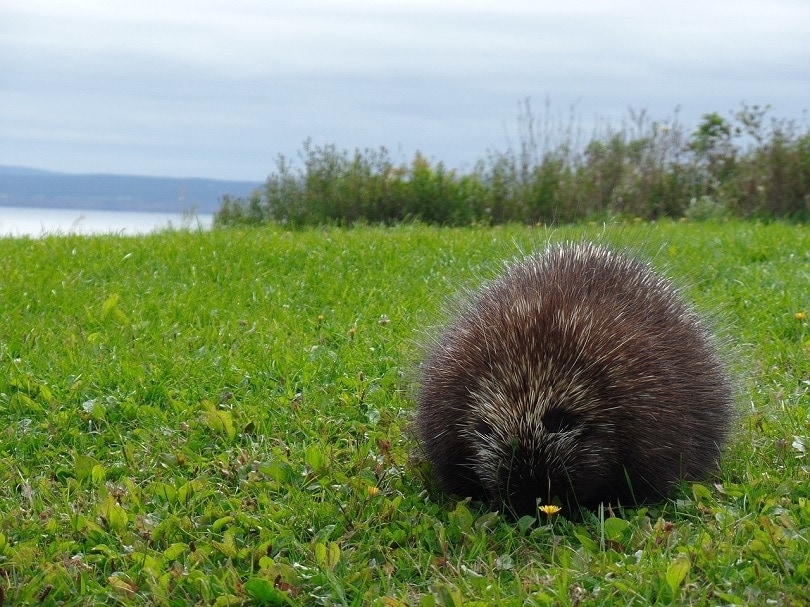
The quills will be carefully pulled, and the wounds cleaned thoroughly. Pain relief will be given to your dog to keep them comfortable, and your vet may prescribe antibiotics as well to try and stop infections from occurring. You may need to continue with some of these medications at home once your pet is discharged from the hospital.
Your veterinarian will ask you to monitor your dog carefully at home following his treatment. Some dogs will need more than one trip to the veterinary hospital following a porcupine attack. It is common for not all the quills to be found the first time, especially if they were broken, buried under the skin, or hidden in thick fur.
What Happens if You Leave Porcupine Quills in Your Dog?
The main risk with leaving quills embedded is that of infection. The quills are not clean and carry bacteria, which has now been introduced under your dog’s skin. This risk is increased if parts of the quill end up being broken off and remain behind in the dog. Painful pus-filled abscesses can form around them as their body tries to fight off the bacteria and foreign material.
Even if your veterinarian successfully removes the quills from your dog, there is always the risk that some tips may have been missed, particularly if these broke off on the way to the clinic.
Monitor your dog for any swellings or discharges from their skin. If the skin feels hot or seems inflamed, then this can also be a sign that an infection is occurring. Sometimes your dog may become unwell, showing symptoms like lethargy, a high temperature, or changes in their appetite and thirst. Speak to your veterinarian if you are seeing any issues like these.
The good news is that the spines themselves don’t contain any toxins, though; there is no poison or venom present in porcupine quills.
The risk of catching rabies from a porcupine is very low. The virus is spread in an animal’s saliva, so bite wounds are the usual way of becoming infected with rabies. However, when porcupines groom themselves, they may leave traces of saliva on their quills, so there is a small risk. Keeping your dog’s rabies shots up to date will help reduce their risk further.
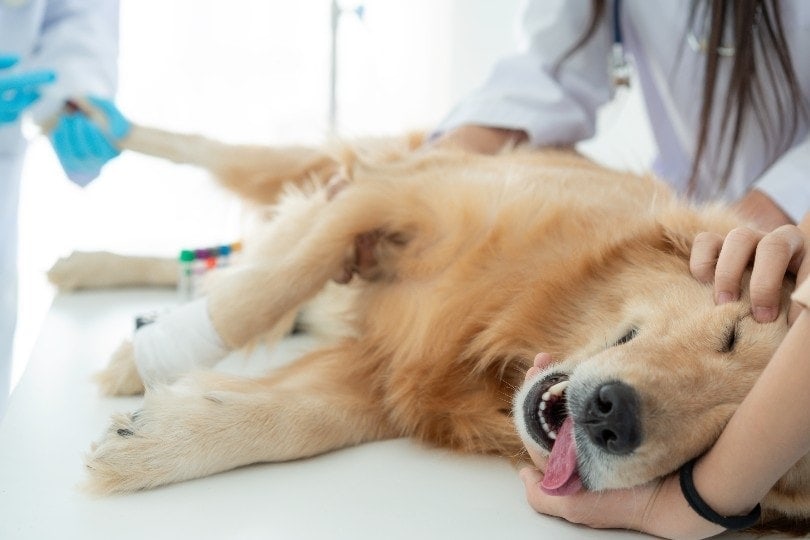
How Do I Avoid This Happening Again?
Porcupines are most active in the warmer months and tend to be nocturnal creatures. Many dogs are, therefore, attacked when walking at dawn or dusk or perhaps if they are out late at night in the backyard.
If you live in an area with a high number of porcupines, you may want to ensure your fencing is in good order to reduce the likelihood of porcupines on your property. Try and walk your dog when it’s light if possible, as many attacks occur when a dog accidentally stumbles across a porcupine in the dark.
Despite popular belief, dogs don’t tend to ‘learn from their mistakes’, so there is always the chance of accidents happening again. Working on your dog’s recall through positive training methods may help you to call them back promptly if they do encounter a porcupine. You could play it even safer by keeping them on a leash, particularly when it’s dark.
Conclusion
In summary, porcupine attacks are usually an unfortunate accident affecting inquisitive dogs. You must call your veterinarian immediately to inform them of what has happened. Do not try to treat your pet yourself at home. Most dogs do well with proper treatment, so get them seen as soon as possible to reduce the risk of complications.
Featured image credit: Steve Oehlenschlager, Shutterstock



